Understanding Engagement and Wedding Rings: A Guide to Making Informed Decisions

Table of Contents
We understand that finding your special someone and embarking on the most lasting and exciting journey of your life is one of the most important desires for everyone. One amazing symbol of this love and belonging, which is always with you and can even make you smile when you look at it, is your ring that your partner gives you to keep forever.
However, based on our experiences, many of our customers are not familiar with these kinds of rings. And honestly, they are right, because this is usually a unique event without any previous experience. They often have questions like: How many rings are there for a marriage? Do brides buy engagement rings for grooms too? I have bought an engagement ring; should I buy a wedding ring too? And many other questions.
We know that cultures and customs vary from one country to another, and even within a country, you may find different traditions. However, there are some common practices around the world, and we would like to provide a general insight. Ultimately, the best decision is up to you.
What is engagement ring? What is wedding ring? Which comes first?
An engagement ring and a wedding ring are both types of rings associated with marriage, but they serve different purposes and are given at different times.
Engagement Ring
-Purpose: The engagement ring is given during a marriage proposal.
-Design: Typically features a prominent gemstone, most commonly a diamond. It can be more elaborate in design.
-Timing: Given before the wedding during the proposal. It symbolizes the intent to marry and is worn from the moment of the proposal until the wedding day and beyond.
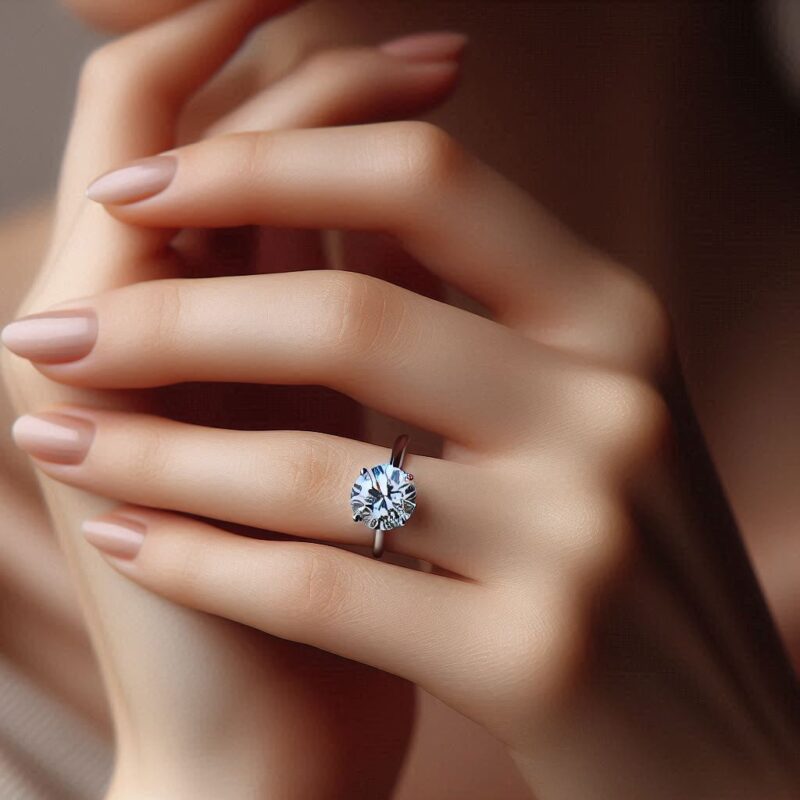
Wedding Ring
-Purpose: The wedding ring is exchanged during the wedding ceremony.
-Design: Usually simpler than the engagement ring. It is often a plain band or a band with small gemstones.
-Timing: Exchanged by the couple during the wedding ceremony. It symbolizes the official union of marriage and is worn from the wedding day forward.
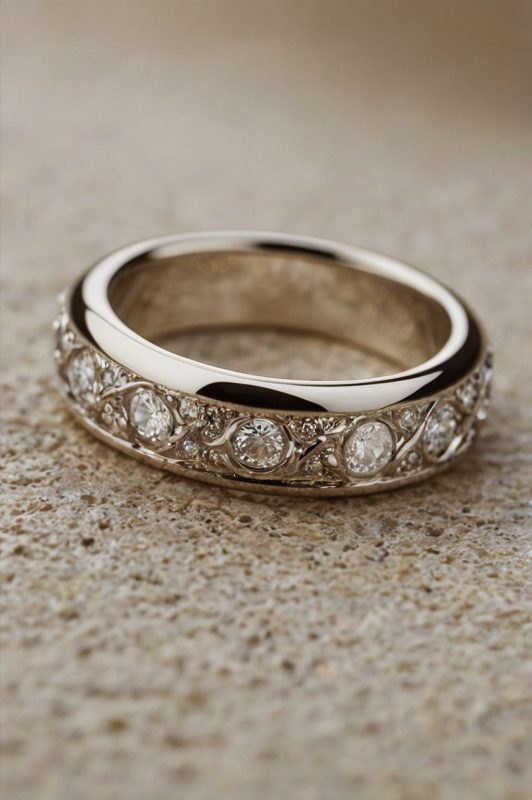
Sequence
1. Engagement Ring: Comes first. Given during the proposal.
2. Wedding Ring: Exchanged during the wedding ceremony.
In many cultures, the engagement ring is worn on the ring finger of the left hand, and after the wedding, the wedding ring is placed on the same finger, either in front of or behind the engagement ring.
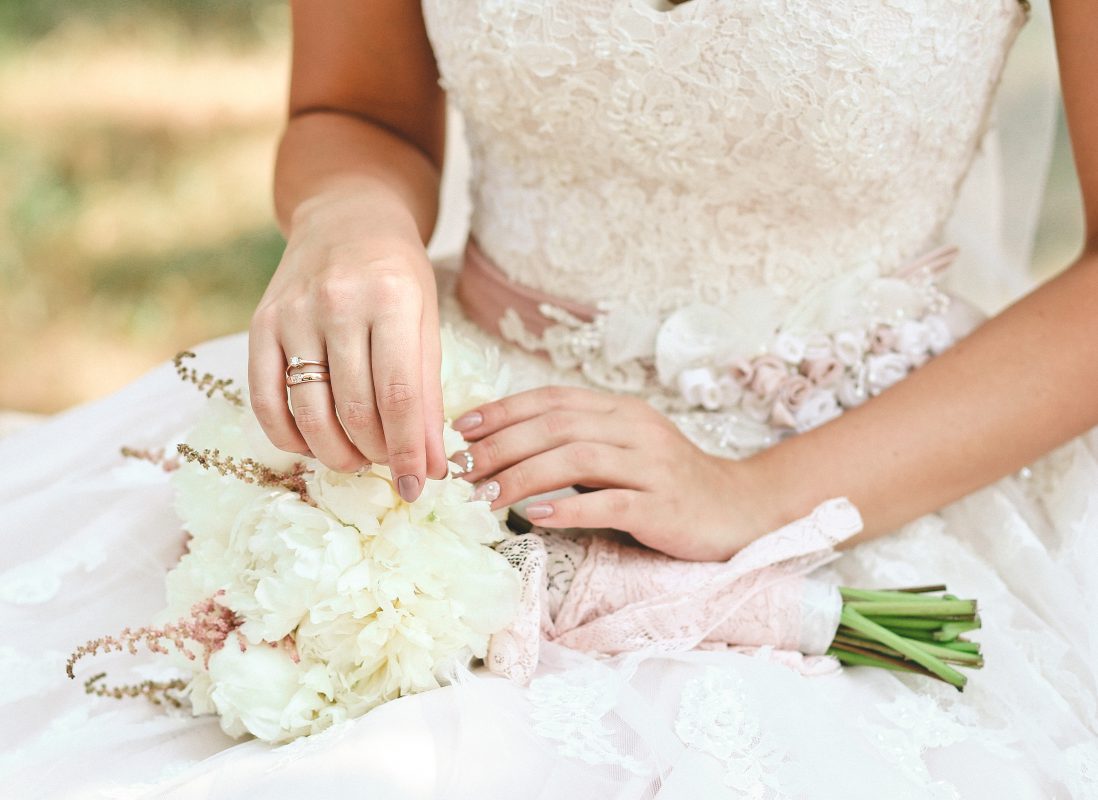
Do the both partners get engagement rings?
Traditionally, engagement rings are typically given to women, but this custom has evolved and varies across different cultures and personal preferences. Here are some modern practices:
Traditional Practice:
– Women: Typically receive an engagement ring when they are proposed to.
– Men: Usually do not receive an engagement ring but will wear a wedding band after the wedding.
Modern Trends or Some Cultures:
– Both Partners: In some couples, both partners exchange engagement rings. This can be a symbol of mutual commitment and equality.
– Same-Sex Couples: May choose to exchange engagement rings to mark their engagement, depending on personal preferences.
– Men’s Engagement Rings: There is a growing trend where men also wear engagement rings. These rings are often simpler and more masculine in design compared to women’s engagement rings.
Ultimately, whether both partners get engagement rings is a personal decision based on the couple’s preferences and values. There are no strict rules, and the practice can be adapted to suit what feels right for each couple.
What happens to engagement ring after wedding?
After the wedding, the engagement ring is typically worn alongside the wedding ring. Here are a few common practices regarding how the engagement ring is worn post-wedding:
Common Practices:
1. Wearing Both Rings on the Same Finger:
– Left Ring Finger: The most traditional and common practice in many cultures is to wear both the engagement ring and the wedding ring on the ring finger of the left hand.
– Order of Rings: The wedding ring is usually placed on the finger first, followed by the engagement ring. This is based on the tradition that the wedding ring should be closest to the heart.
2. Separating the Rings
– Some people choose to wear the wedding ring on the left hand and move the engagement ring to the ring finger of the right hand.
3. Soldering the Rings:
– Some couples opt to have their engagement ring and wedding ring soldered together, creating a single, unified piece of jewelry. This ensures that the rings stay aligned and reduces wear.
4. Occasional Wearing:
– Some may choose to wear their engagement ring only on special occasions or switch it to a different finger or hand to avoid damage or loss.
5. Stacking Rings:
– Some people add anniversary bands or other significant rings to the stack on the same finger as the wedding and engagement rings, creating a layered look.
Ultimately, how the engagement ring is worn after the wedding is a personal choice and can be influenced by tradition, comfort, and personal preference.
What rules are there for engagement ring?
There are no strict rules for engagement rings, but there are some widely observed traditions and guidelines that many people follow. Here are some common practices and considerations:
Common Traditions and Guidelines:
1. Proposal Tradition:
– Traditionally, the engagement ring is presented during a marriage proposal. The person proposing typically kneels and offers the ring while asking the partner to marry them.
2. Design and Style:
– Engagement rings often feature a prominent gemstone, usually a diamond, but other gemstones are also popular. The ring can be a solitaire (single stone), have a halo setting (a central stone surrounded by smaller stones), or be a three-stone ring, among other designs.
3. Budget:
– A traditional guideline suggests spending about two to three months’ salary on an engagement ring, though this is not a hard rule. Many people choose a ring based on what they can comfortably afford.
4. Ring Finger:
– The engagement ring is typically worn on the ring finger of the left hand. This tradition dates back to the belief that this finger has a vein that runs directly to the heart (the “vena amoris”).
5. Cultural Variations:
– In some cultures, engagement rings are not as common, or different customs may apply. For example, in some European countries, engagement rings are worn on the right hand.
Modern Trends:
1. Both Partners Wearing Rings:
– Some couples choose to have engagement rings for both partners. Men’s engagement rings are becoming more popular and are often simpler in design.
2. Custom Designs:
– Many couples opt for custom-designed rings to reflect their personal tastes and significance.
3. Alternative Gemstones:
– While diamonds are traditional, many people choose other gemstones, such as sapphires, emeralds, or even non-traditional stones like moissanite.
4. Ethical Considerations:
– Some couples prioritize ethical sourcing and choose conflict-free diamonds or lab-grown diamonds to ensure their ring aligns with their values.
Flexibility and Personal Choice:
– No Hard Rules: Ultimately, there are no strict rules that must be followed. The choice of the ring, how it is presented, and how it is worn are all personal decisions.
– Focus on Meaning: The most important aspect of an engagement ring is the meaning and commitment it represents between the couple.
How many rings does a guy need to propose?
To propose, you typically only need one ring: the engagement ring. Usually people buy wedding ring together and you don’t need to have wedding ring in proposal.
Are there any rules for buying a wedding ring?
There are traditions surrounding wedding rings, but not many hard and fast rules. Here’s what to consider:
• Budget: Forget the two- or three-month salary myth. Decide on a comfortable amount to spend together.
• Style: Choose a ring you’ll love to wear every day. Consider your lifestyle and taste.
• Metal: Popular options are platinum, gold (white, yellow or rose) or even titanium.
Stone (optional): Diamonds are classic, but there are many beautiful gemstones or even no stone at all.
• Shopping together: It can be a fun experience to choose the rings together.
• Who pays: Tradition suggests the groom buys the bride’s ring and vice versa. But do what works for you!
Most importantly, focus on the symbolism of the rings – a celebration of your love and commitment.
Does the bride buy ring for her husband?
Tradition leans towards the bride (or her family) buying the groom’s wedding ring. This stems from a time when weddings were more about family alliances, and the bride’s family would contribute to the wedding expenses, including the groom’s ring.
However, that’s not set in stone! Many modern couples choose a different approach:
• Shared responsibility: Some couples split the cost of both rings. This reflects a more equal partnership approach to finances.
• Mutual gifting: The couple might buy each other’s rings as a special gift.
• Groom chooses his own: The groom might choose and purchase his own ring.
Ultimately, the decision of who buys the groom’s ring is entirely up to the couple. There’s no right or wrong answer. Discuss what feels comfortable and financially responsible for you both.
Which finger to wear proposal ring? wich finger for wedding band?
In many Western countries, the tradition for both the proposal ring (often an engagement ring) and the wedding band is to wear them on the fourth finger of the left hand, also known as the ring finger. This tradition has roots in ancient Rome, where they believed a vein in this finger, called the “Vena Amoris” or “vein of love”, ran directly to the heart.
However, it’s important to remember traditions can vary depending on culture and personal preference:
• Cultural Differences: In some countries like Russia, Germany, Norway and India, engagement and wedding rings are traditionally worn on the right hand.
• Personal Choice: There’s no hard and fast rule. You and your partner can choose whichever finger feels comfortable for both rings.
Does an engagement ring go top or bottoms?
There’s actually no strict rule about whether an engagement ring goes on top of the wedding band or underneath! It’s a matter of personal preference and tradition. Here are the two most common ways couples wear them:
• Engagement Ring on Bottom, Wedding Band on Top (Traditional): This is the more traditional way, symbolizing the wedding band “sealing the deal” of the engagement.
• Engagement Ring on Top, Wedding Band on Bottom: This is becoming increasingly popular. Some like to see the engagement ring first, as it often has a more prominent design, or they might wear the rings in the order they were received.
Here are some additional things to consider:
• Ring Style: If the engagement ring has a high setting or a very ornate design, it might look better on top for comfort or stacking purposes.
• Comfort: Wear them both ways and see which feels more comfortable on your finger.
• Personal Preference: Ultimately, choose the way that you and your partner find most aesthetically pleasing and comfortable!
There’s no right or wrong answer, so have fun and enjoy this special time in your relationship!
Who puts the ring on first?
In a traditional wedding ceremony order, the groom typically places the wedding band on the bride’s finger first. This act is often accompanied by words like “With this ring, I give you my love…”
However, traditions are evolving, and many couples choose a more progressive approach:
• Mutual Ring Exchange: Both partners can place rings on each other’s fingers at the same time, symbolizing an equal partnership.
• Bride Goes First: The bride can put the ring on the groom’s finger first, especially if she feels more comfortable taking that step.
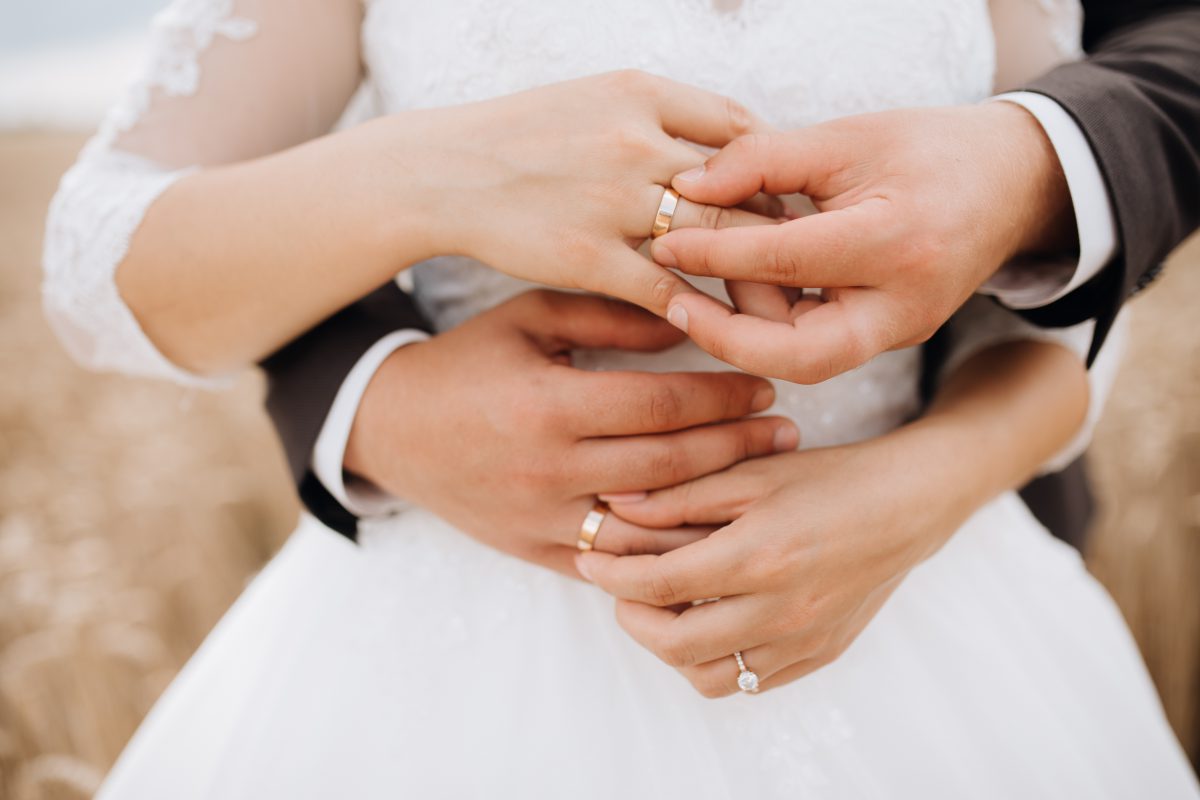
The most important thing is to discuss it with your partner and decide what feels most comfortable and meaningful for both of you. There’s no right or wrong answer – it’s your special day, so personalize it to reflect your love story!
Do wedding ring go up in value?
Generally, wedding rings don’t go up in value like an investment. In fact, they tend to depreciate (lose value) after purchase. Here’s why:
• Daily Wear: Wedding rings are meant to be worn daily, and scratches and nicks can bring down their value.
• Style Trends: Styles and preferences for metals and stones can change over time, affecting how desirable a ring is for resale.
However, there are exceptions where a wedding ring might hold some value:
• Antique or Vintage Rings: Unique or historically significant rings can appreciate in value over time, especially if they’re from a well-known designer or jeweler.
• High-Quality Stones: Large, flawless diamonds or rare gemstones might retain some value, but the market for these is limited.
Overall, wedding rings are symbols of love and commitment, not investments. The sentimental value far outweighs their resale price.
When should you buy a wedding ring?
The best time to buy your wedding rings depends on a few factors:
• Lead Time: It generally takes 2-3 months to get wedding rings, especially if they need to be sized or customized. Consider this lead time when planning your purchase. In Artemies Gems and Jewelry, usually for most of countries it takes 7-10 days to receive your order. for more information read our Delivery and Shipping. Shipping and Delivery
• Planning Style: Some couples like to plan their wedding well in advance, while others prefer a shorter engagement. If you’re laid-back, you might be okay with a shorter window.
• Customization Needs: Do you want simple bands or unique designs? If you want something custom-made, factor in extra time for the design and crafting process. Just contact us by email.

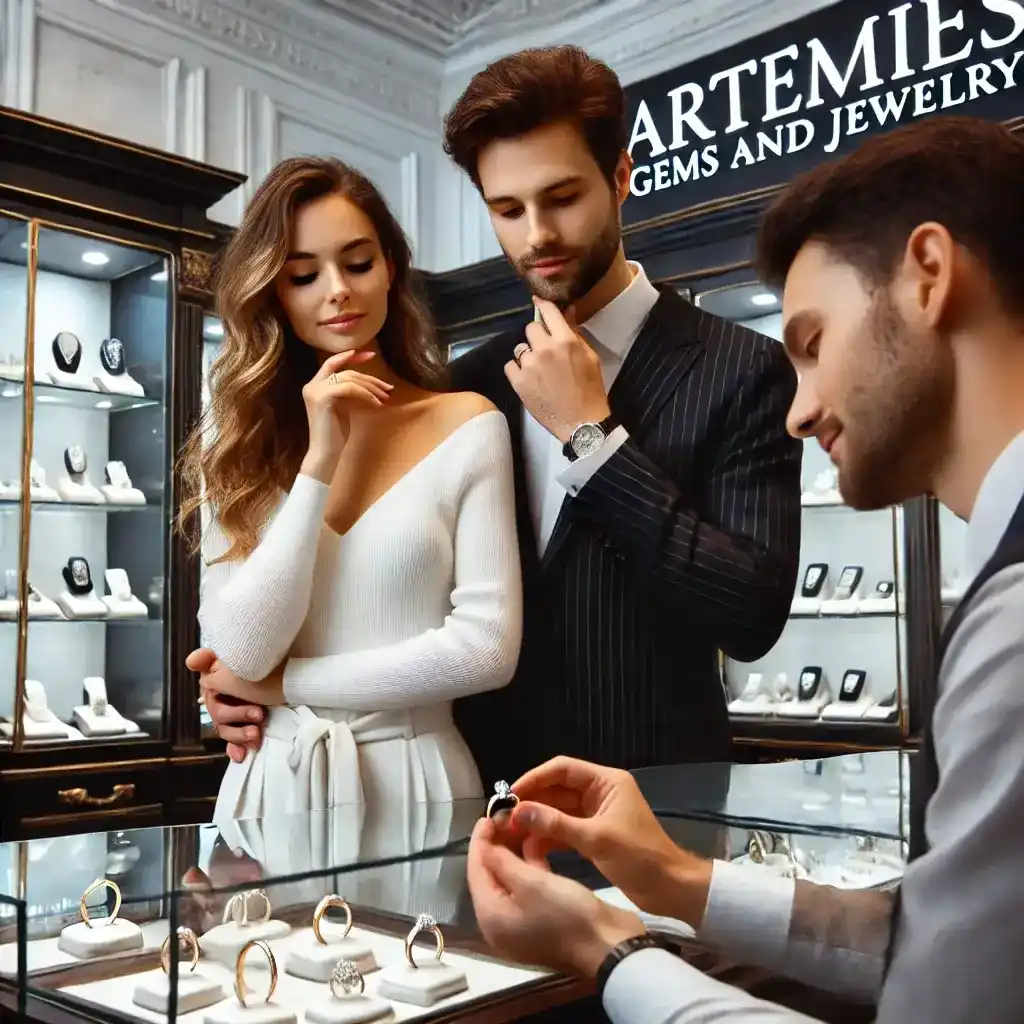

4 thoughts on “Understanding Engagement and Wedding Rings: A Guide to Making Informed Decisions”
Some genuinely wonderful work on behalf of the owner of this website , utterly outstanding content.
Thanks so much! I’m really glad you liked the work.
whoah this weblog is fantastic i love reading your posts. Keep up the good paintings! You realize, lots of persons are hunting around for this information, you can help them greatly.
Thank you so much for your kind words! 🌸 We’re really glad you’re enjoying our articles. Our goal is to make reliable and inspiring information about gemstones and jewelry more accessible to everyone. Stay tuned — we’ve got more exciting features and expert insights coming soon!